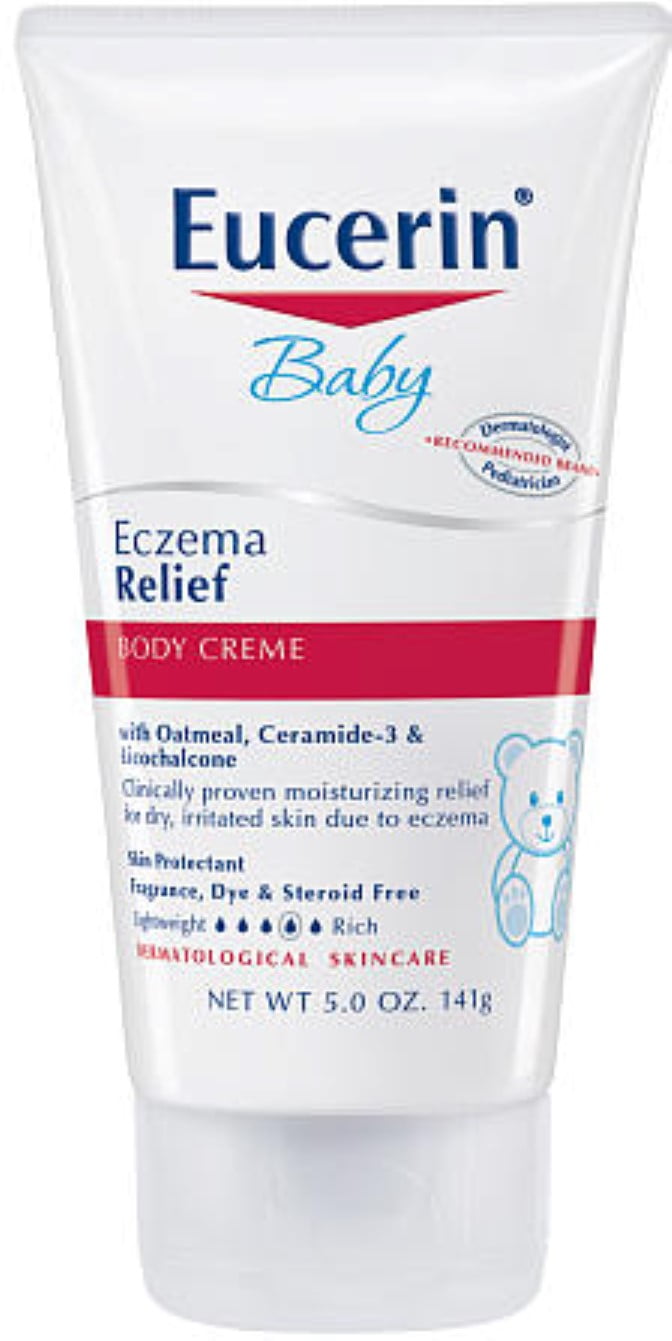


#BABY ECZEMA CREAM HOW TO#
telling teachers at your childcare centre, kindergarten or school how to dress your child appropriately.keep your child’s room at or below 15☌ overnight.keeping your house below 20☌ during the day.removing doonas and woollen blankets from your child's bed and using a cotton blanket or sheet instead.dressing your child in one or two thin layers of cotton clothing.Heat is the most common trigger for eczema. Thicker creams are more effective than lotions.įragrance-free moisturisers, bath oils or soap-free body wash (not plant-based) should be used in the bath and shower. Some children will require moisturiser application once or twice a day, while others will need it more often.
#BABY ECZEMA CREAM SKIN#
environmental allergens, such as pet fur, pollen and house dust mites – if you think your child may be allergic to one of these allergens, take them to see an allergist.Ī thick, plain moisturiser with no fragrance should be used as often as necessary on your child, even when the skin is clear of eczema.toothpaste – use a product without SLS as an ingredient.detergents, soaps, bubble baths, antiseptic washes.prickly materials, such as woollen or acrylic clothing, bedding and car seat covers.dummies, dribbling or food around the mouth – apply thick moisturiser around the mouth, wash the skin with a soft, wet towel after eating and then reapply the moisturiser.Some common things that can irritate the skin include: Avoid things that irritate the skinĮach child may react to different things, and it may take a while to work out what is irritating your child's skin. Using the following strategies will help control the eczema and make your child more comfortable. allergies to environmental allergens, such as dust mites, plant pollens or animal furĮczema can be well controlled at home in most children by identifying and avoiding triggers.irritation from soaps, detergents, fabrics or other chemicals.becoming overheated with clothing, blankets, heaters.Some children with eczema may also develop asthma or hay fever.Įczema can be triggered by a number of things, such as: If a member of your family has eczema, asthma or hay fever, then it is more likely that your child will have eczema. The signs of a secondary infection are weepy, crusted and broken areas of eczema. Do not allow anyone with a cold sore to kiss your child, as the eczema may become infected with the cold sore virus. Secondary bacterial or viral skin infections are also common in children with eczema, especially when the eczema is not well controlled. It is important to effectively manage the eczema and control it as soon as it flares up. It is common for the severity of the eczema to change, and you will notice that sometimes your child's eczema is mild, while at other times it gets worse. In some children the rash can cover their entire body.In toddlers and older children, the eczema rash is often in the skin creases around the knees, wrists, elbows and ankles.The rash is very itchy and may keep them awake at night. The rash may be on their scalp, body, arms and legs or behind their ears. Babies with eczema usually have a red, dry rash on their face.However, there are many ways to keep eczema under control and help your child feel more comfortable. Unfortunately there is no cure for eczema. Sometimes these areas of skin can become cracked, weepy and then scab over. This fact sheet is available in the following languages: Arabic,Įczema is a common skin condition that usually begins before your child is one year old.


 0 kommentar(er)
0 kommentar(er)
